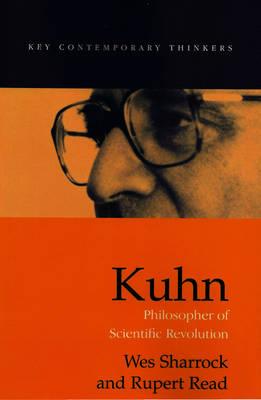Overview
Thomas Kuhn's shadow hangs over almost every field of intellectual inquiry. His book The Structure of Scientific Revolutions has become a modern classic. His influence on philosophy, social science, historiography, feminism, theology, and (of course) the natural sciences themselves is unparalleled. His epoch-making concepts of ‘new paradigm’ and ‘scientific revolution’ make him probably the most influential scholar of the twentieth century. Sharrock and Read take the reader through Kuhn's work in a careful and accessible way, emphasizing Kuhn's detailed studies of the history of science, which often assist the understanding of his more abstract philosophical work. These historical studies provide vital insight into what Kuhn was actually trying to achieve in his The Structure of Scientific Revolutions: an endeavour far less extreme than either his ‘foes’ or his ‘fans’ claim. In the book's second half, Sharrock and Read provide excellent explications, defences and, where appropriate, criticisms of Kuhn's central concept of ‘incommensurability’, and tackle head on the crucial issue of whether Kuhn's insights concerning the natural sciences can be extrapolated to other disciplines, such as the social sciences. This is the first comprehensive introduction to the work of Kuhn and it will be of particular interest to students and scholars in philosophy, theory of science, management science and anthropology.
Full Product Details
Author: Wes Sharrock (University of Manchester) ,
Rupert Read (University of Manchester)
Publisher: John Wiley and Sons Ltd
Imprint: Polity Press
Dimensions:
Width: 15.20cm
, Height: 2.10cm
, Length: 22.90cm
Weight: 0.372kg
ISBN: 9780745619293
ISBN 10: 0745619290
Pages: 248
Publication Date: 06 September 2002
Audience:
College/higher education
,
Professional and scholarly
,
Undergraduate
,
Professional & Vocational
Format: Paperback
Publisher's Status: Active
Availability: Available To Order

We have confirmation that this item is in stock with the supplier. It will be ordered in for you and dispatched immediately.
Reviews
""As Thomas Kuhn indicated in the first sentence of his great book, The Structure of Scientific Revolutions, his aim was to “produce a decisive transformation in the image of science by which we are now possessed”. Unfortunately, many of Kuhn's readers have been possessed by a distorted image of Kuhn's own position, and so failed to appreciate the signal contribution he made to our understanding of scientific practice. Sharrock and Read aim to do for our image of Kuhn what Kuhn did for our image of science. They succeed brilliantly, giving a wonderfully insightful and nuanced account of what Kuhn was up to and what he achieved."" Peter Lipton, University of Cambridge
"As Thomas Kuhn indicated in the first sentence of his great book, The Structure of Scientific Revolutions, his aim was to "produce a decisive transformation in the image of science by which we are now possessed". Unfortunately, many of Kuhn's readers have been possessed by a distorted image of Kuhn's own position, and so failed to appreciate the signal contribution he made to our understanding of scientific practice. Sharrock and Read aim to do for our image of Kuhn what Kuhn did for our image of science. They succeed brilliantly, giving a wonderfully insightful and nuanced account of what Kuhn was up to and what he achieved." Peter Lipton, University of Cambridge
As Thomas Kuhn indicated in the first sentence of his great book, The Structure of Scientific Revolutions, his aim was to ?produce a decisive transformation in the image of science by which we are now possessed?. Unfortunately, many of Kuhn's readers have been possessed by a distorted image of Kuhn's own position, and so failed to appreciate the signal contribution he made to our understanding of scientific practice. Sharrock and Read aim to do for our image of Kuhn what Kuhn did for our image of science. They succeed brilliantly, giving a wonderfully insightful and nuanced account of what Kuhn was up to and what he achieved. Peter Lipton, University of Cambridge
As Thomas Kuhn indicated in the first sentence of his great book, The Structure of Scientific Revolutions, his aim was to produce a decisive transformation in the image of science by which we are now possessed . Unfortunately, many of Kuhna s readers have been possessed by a distorted image of Kuhna s own position, and so failed to appreciate the signal contribution he made to our understanding of scientific practice. Sharrock and Read aim to do for our image of Kuhn what Kuhn did for our image of science. They succeed brilliantly, giving a wonderfully insightful and nuanced account of what Kuhn was up to and what he achieved. Peter Lipton, University of Cambridge
Author Information
Wes Sharrock is Reader in Sociology at the University of Manchester and Rupert Read is Lecturer in Philosophy at the University of East Anglia



